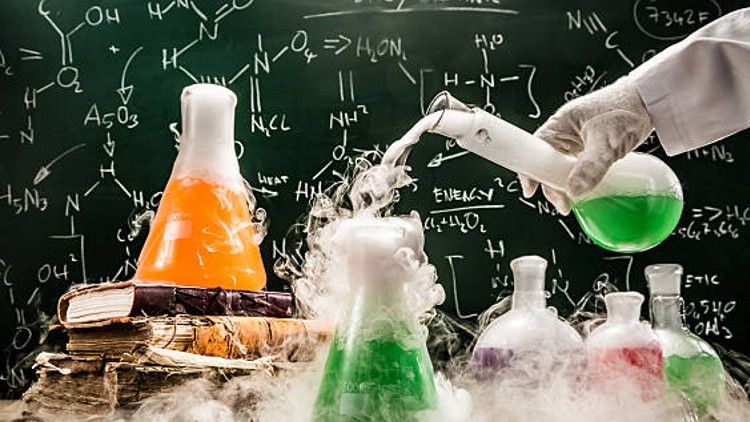
Pay more attention in class knowing you have notes you could rely on.
What you will learn
Step-by-Step Notes on how to complete a problem
Organic Chemistry 1
Organic Chem 1
Orgo Chem 1
Description
Orgo 1 – Notes
Formal Charge
Constitutional Isomers (aka Structural Isomers)
Resonance Structures
Bond Angles & Molecular Shape
Condensed, Partially Condensed & Lewis Structures
Functional Groups (Alcohols; Ethers; Amines; Aldehydes; Ketones; Carboxylic Acids; Anhydrides; Esters; Amides)
Organic Compound Classifications (primary; secondary; tertiary; quaternary)
Intermolecular Forces (Hydrogen Bonding; Vander Waals Forces)
Nomenclature & IUPAC System (Alkanes; Cycloalkanes)
Newman Projections
Cyclohexane Chair Conformations (equatorial vs axial energy levels & stabilization)
Stereoisomers, Enantiomers (including Enantiomer Nomenclature) & identifying Diastereomers, Chiral Centers (Chirality) and R&S Assignment, cis vs trans & identifying Meso Compounds
Acids & Bases (identifying the conjugate acid & conjugate base); Acid Strength (Inductive Effect; Resonance Effect); Equilibrium favors formation of…
E1, E2, SN1, SN2 Reactions
Bond Breaking (Homolitic & Heterolitic cleavage – Homolysis & Heterolysis)
Bond Dissociation Energy (BDE) (Activation Energy; Endothermic & Exothermic Reactions)
Preparation of Haloalkanes by Halogenation of Alkanes (Br or Cl)
Monochlorination (Halogenation)
Radical Halogenation (Initiation, Propagation #1, Propagation #2, Termination)
Energetics of Chain Propagation
Preparation of Haloalkanes by Halogenation of Alkanes
Halogenation (Bromination vs Chlorination)
Organometallic Reagents
Preparation of Alcohols, Ethers, and Epoxides
Preparation of Alkoxides & Forming Epoxides from Halohydrins
Dehydration of Alcohols to Alkenes
Carbocation Rearrangements
Conversion of Alcohols to Alkyl Halides with HX
Conversion of Alcohols to Alkyl Halides with SOCl2 & PBr3
Conversion of Alcohols to Alkyl Tosylates
Epoxide Reactions with Acids
Opening Epoxide Ring with Strong Nucleophile
Hydrohalogenation – Ionic & Electrophilic Addition of HX
Hydration – Electrophilic Addition of Water
Halogenation (Anti Addition)
Halogenation – Electrophilic Addition
Halohydrin Formation (Anti Addition)
Hydroboration-Oxidation (SYN Addition)
Hydroboration-Oxidation vs Hydration
Radical Addition of HBR
Catalytic Hydrogenation (SYN Addition)
Epoxidation (Oxidation Reaction)
Dihydroxylation (Oxidation Reaction)
Oxidative Cleavage (Oxidation Reaction)
Lewis Acids & Bases
Grignard Reagents
Organometallic Reagents
Coupling Reactions of Organocuprates
Organocuprates
Alkyl Halide Nomenclature
SN2 Reactions (Nucleophilic Substitution)
SN1 Reactions (Nucleophilic Substitution)
Carbocation Stability
Determining SN1 or SN2 based on Alkyl Halide Class & Strong/Weak Nucleophile
SN1 & SN2 Stereochemistry
Orgo 2 – Notes
Preparation of Alkynes
Alkyne Rxns – Bases that can Deprotonate Acetylene
Keto-Enol Tautomerization
Hydroboration-Oxidation
Keto-Enol Tautomerization & Hydroboration-Oxidation
Acetylide Anion Rxns
Alkyne Nomenclature
Conjugate Dienes
Electron Delocalization & Hybridization
Stability of Conjugate Dienes
Diels-Alder Rxn (Rules 1-4)
Nomenclature of Benzene Derivatives
Stability of Benzene
Classifying Aromatic Heterocycles
Ionic Aromatic Compounds & Heterocycle Hybridization
Halogenation
Substituent Effects on Electrophilic Aromatic Substitution
Orientation Effects of Substituted Benzenes
Rxns of Activated Rings
Nucleophilic Aromatic Substitution – Addition-Elimination
Nucleophilic Aromatic Substitution – Elimination-Addition
Oxidation of Alcohol
Carbonyl Reduction
Protecting Groups
Organocuprates (Gilman Reagents)
Simmons-Smith Rxn
Nucleophilic Addition of Hydride
Suzuki Mechanism
Heck Rxn
Mass Spectrometry
IR Structure
Proton NMR
Imine Formation
Acetal Formation
Acetal Hydrolysis
Preparation of Carboxylic Acids
Acid-Base Rxns of Carboxylic Acids
Carboxylic Acid Inductive Effects
Substituted Benzoic Acids
Properties of Carboxylic Acid Derivatives
Acid Chloride Nomenclature
Nucleophilic Acyl Substitution
Amide Synthesis
Anhydride Rxn
Carboxylic Acid – Fischer Esterification
Nitrile Formation
Hydrolysis (Amide Hydrolysis in Acid, Ester-Acid Hydrolysis, Ester-Base Hydrolysis)
Esters – Lactone (Cyclic Ester)
Hydrolysis of Acetals
Carboxylic Acid – Acid Base Rxns
Nomenclature of Carboxylic Acid Derivatives
Fischer Esterification – Carboxylic Acid
Enolate
Halogenation at Alpha Carbon
Haloform Rxn
Direct Enolate Alkylation
Aldol Rxn
Claisen Rxn
Malonic Ester Rxn
Acetoacetic Ester Rxn
Michael Rxn
Content